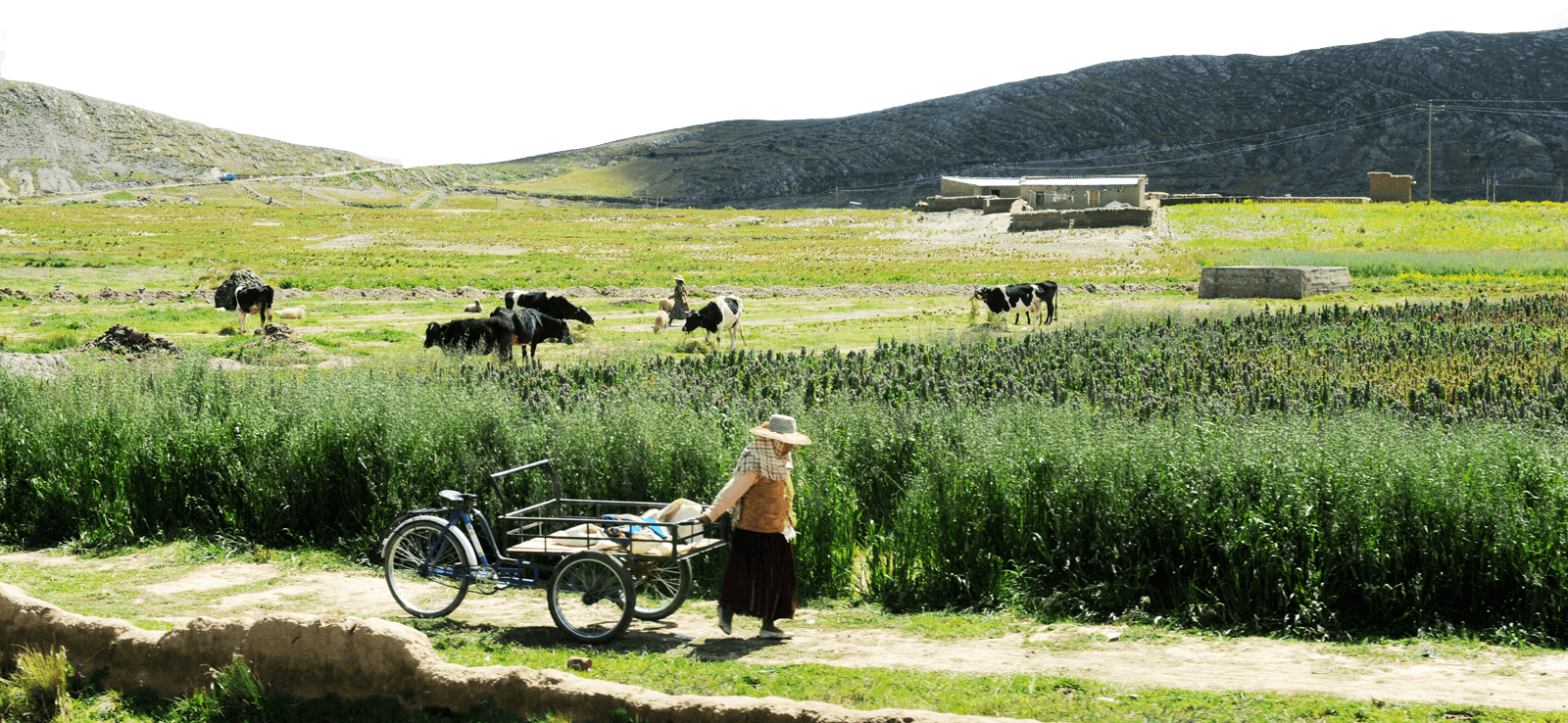Escaping the Circle of Poison in the US
This July, the EPA announced that it would not ban Chlorpyrifos, allowing their sale for non-household use to continue to be subject to review through 2022. Chlorpyrifos, linked to brain damage in children, are just one of the many dangerous pesticides allowed by the EPA and banned in many other countries around the world. The EPA’s decision is a prime example of why we cannot rely solely on pesticide bans in an effort to move away from the use of dangerous chemicals in agriculture. Government-led bans are precarious because of their reliance on the politics of the current administration, corporate backed science, and enough public outrage to galvanize a ban. More significantly, pesticide bans alone fail to address how the demands of our capitalist industrial agricultural system push farmers to continue and even increase their pesticide use.
In today’s agricultural system, the capitalist imperatives of profit-maximization, market-dependence, and overproduction keep farmers sprinting on what has been termed the “pesticide treadmill.” Because capitalist agriculture has turned agricultural products into commodities, agricultural production attempts to minimize the costs of inputs and maximize output and profits. Profit maximization and competition are structural factors that govern crop selection, crop rotation, chemical and mechanical inputs, the scale of production, labor costs, and when crops are sold.
In order for commodity farmers to survive in agricultural markets, farmers must use monocropping, minimize rotation, and expand the size of farm. These practices demand enormous chemical and mechanical inputs, from fertilizers to replenish soils depleted by monocropping and insufficient crop rotation, to industrial scale farm equipment to manage such vast fields, to pesticides to counter monocropping’s vulnerability to pests and weeds. The initial decisions of monocropping and the need to maximize production (especially for genetically modified cash crops that have a low per acre value like corn and soy) mean that there is no option but to use pesticides. In turn, it becomes difficult for farmers to turn away from continuing to use pesticides, since the commonly-used, industrially-oriented agricultural methods are impossible without them.
The American agricultural system cemented its path towards chemical dependency after WWII, when chemical companies sought new markets for wartime innovations and governmental policies pushed farmers to “get big or get out.” Pesticides allowed farmers to decrease labor costs while increasing yields and control over their costly agricultural investments. As the fixed costs of agricultural production rose sharply with the introduction of various technological developments and farmers were forced to expand, pesticides became an absolute necessity to the size and type (i.e., extensive monocultures) of farming that has become dominant.
The extensive use of pesticide in the US agricultural industry has detrimental effects on the environment, biodiversity, consumers, pesticide applicators, household users, and, most significantly, farmworkers. However, because of the integral role played by pesticides in industrial agriculture, ending our reliance on pesticides has to be more systemic than simply banning individual pesticides.
While bans are vital for addressing the immediate health concerns of pesticide use and for keeping dangerous pesticides away from workers and the general population, one issue with this approach is that bans do not mean that the chemical will be immediately taken out of use or production. Bans often take years to gradually come into effect and allow companies to sell chemicals in countries where regulations are not in place. When the EPA puts a ban in place, it is only removing a pesticide from being registered for use; the chemical may not be sold for use in the US, but it may still be produced and exported. It also means that when the time comes to review pesticide registrations, it could be easily re-registered with changes in political conditions, as for example in the EPA’s reversal on Chlorpyrifos under the Trump administration.
Another problem with bans is the elimination of one pesticide often leads to its replacement with another. This is practically inevitable in current conditions because the root causes of pesticide use remain unchanged. As Nathan Donley of the Center for Biological Diversity writes, “While a pesticide ban is the most effective method of preventing exposure to a single pesticide, one potential undesirable effect is that it could result in the substitution of another pesticide that has a similar potential for harm.”
Stay in the loop with Food First!
Get our independent analysis, research, and other publications you care about to your inbox for free!
Sign up today!Simply put, many commodity farmers can’t produce at the rate they need to survive in a hyper-competitive market without chemical inputs. Banning pesticides and moving towards organic farming without changing how capitalism structures farming will leave many “conventional” farmers in an impossible position. It is not financially sound for farmers to move away from pesticide use without significant policy and ecological interventions. The question remains: how do we intervene to transition farmers away from unsustainable practices embedded in capitalist agriculture towards a sustainable agriculture not dependent on the “pesticide treadmill”?
While pesticide bans are important and can result in short term gains, they’ll continue to be several steps behind industry unless we can develop a solution that gets to the root of our farming system’s addiction to pesticides. An example of how we may begin down this road of more comprehensive solutions is parity – policies that guarantee farmers will be compensated for their production costs. Concrete regulations like establishing price floors for agricultural products and supply management, part of the concept of parity, could help farmers finally mitigate their endless trek upon the pesticide treadmill. Instead of being forced to make ends meet by expanding production of low-cost commodities, and in turn, intensifying pesticide use, parity ensures fair incomes for farmers. By guaranteeing farmers economic stability, they could take land out of production and begin the transition towards ecologically sound farming methods without fear of being out-competed by other farmers in the global market.
While many farmers hang on to their livelihoods by a thread and remain without sufficient alternative options, we have to push for comprehensive solutions that move beyond the short-term, and offer farmers a way to exit out of the pesticide trap. Parity is just one of many tools farmers’ movements and allies have offered to re-envision an agricultural system that is good for both farmers and eaters. It is past time to act together for these comprehensive, more just, and more sustainable approaches.
Cover photo by Austin Valley (CC BY 2.0).


 Help Food First to continue growing an informed, transformative, and flourishing food movement.
Help Food First to continue growing an informed, transformative, and flourishing food movement.




